
Proxima13/iStock/Getty Images
If you ever wanted to condense all your daily recommended allotment for protein, fat, cholesterol, calories and salt into one meal, you could choose to eat one serving of eggs Benedict. Traditionally, eggs Benedict consists of toast, ham, eggs and Hollandaise sauce. To make this food choice slightly healthier, you can choose to substitute low-calorie, low-fat options for some of the more fattening ingredients, particularly the butter in the Hollandaise sauce.
Cholesterol
The total amount of cholesterol in eggs Benedict depends on the amount of eggs and butter used to make the Hollandaise sauce. Most four- to six-serving recipes require three to four egg yolks and one to two sticks of butter. Egg yolks contain high levels of cholesterol, about 215 mg per egg. Butter also contains a high level of cholesterol, one stick having 243 mg of cholesterol. A typical three- to four-egg yolk recipe of Hollandaise sauce using two sticks of butter would yield 888 mg to 1,103 mg of cholesterol total or about 222 to 275 mg of cholesterol per 1/4 cup serving. Add to that the 215 mg of cholesterol in the poached egg itself and the 13 mg of cholesterol typically found in a slice of Canadian bacon and you end up with a total of about 450 mg to 500 mg of cholesterol per serving. The total recommended dietary intake of cholesterol for a healthy adult should not exceed 300 mg per day.
Protein
Eggs Benedict contains protein from several sources. Classic eggs Benedict includes one slice of Canadian bacon. However, other meats commonly used include ham, bacon, pancetta and prosciutto. All of them contain about 5 g of protein per slice. Eggs also contain protein, about 6 g per egg. Because the Hollandaise sauce is made with three to four eggs, that too will have some protein, approximately 4 to 6 g depending upon the recipe. Bread also provides some protein. English muffins contain approximately 5 g of protein per muffin. Therefore, one serving of eggs Benedict contains about 21 g of protein. This is close to half your daily protein requirement.
Sodium
Eggs Benedict contains quite a bit of sodium. Sodium comes from the bread, the eggs and especially the meat. One slice of Canadian bacon, ham or prosciutto contains approximately 350 mg of sodium. English muffins contain 246 mg of sodium, similar to crumpets. Eggs contain 65 mg of sodium each. Considering that with the Hollandaise sauce, each serving of eggs Benedict contains about two eggs, that adds about 130 mg of sodium. Without adding any extra salt, the total amount of sodium per serving equals about 726 mg. The 2010 Dietary Guidelines for Americans as well as the Institute of Medicine recommends that healthy adults limit sodium to no more than 1,500 mg to 2,300 mg per day. Thus, the total amount of sodium in one serving of eggs Benedict is about half your daily recommended amount.
Fat
English muffins and crumpets contain very little fat, between 1 to 2.5 g. Eggs contain 4.5 g of fat per egg. The various meat choices for eggs Benedict contain about 2 g of fat. The Hollandaise sauce, however, contains a significant portion of fat due to the butter. Assuming two sticks of butter and four eggs are included in a four-serving recipe, the total amount of fat per serving of Hollandaise sauce would roughly equal about 50 g of fat per serving, a significant portion of which is saturated fat, the type of fat that increases your LDL or "bad" cholesterol and decreases your HDL or "good" cholesterol. The total amount of fat in eggs Benedict equals about 55 g to 60 g of fat. The recommended intake of fat for a healthy adult is about 65 g total per day.
Calories
Each serving of eggs Benedict contains about 715 calories. English muffins or crumpets provide roughly 100 calories, the meat choices provide about 50 calories, the egg provides 65 calories and the Hollandaise sauce provides about 500 calories per serving. To reduce the calorie count of eggs Benedict, using much less Hollandaise sauce or making a Hollandaise sauce that contains less butter or a butter substitute would help.
Related Articles
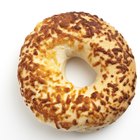
How Many Calories Are in a Cheese Bagel?

How to Make Egg Foo Yung

Can I Substitute Ranch for Mayo in ...
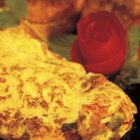
How to Make Omelets With Baking Powder
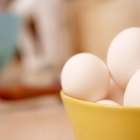
How to Make Quick Easy Egg Salad
How to Make Homemade Pancakes Without ...

Ham & Turkey Sandwich Calories

How to Lower the Fat in a Brownie Mix

Choline in Eggs

Whole Eggs Vs. Egg Yolks for Sweet Bread

Buttered Toast & Bodybuilding
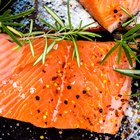
Baked Salmon Filet Nutrition Information
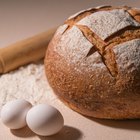
How to Make Nigerian Bread

Wedding Rehearsal Dinner Toast Examples

Are Scrambled Eggs Healthy?

How to Cook Scrambled Eggs on a Griddle

The Calories in a Cheese Omelette
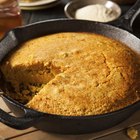
How to Make Southern Fried Cornbread
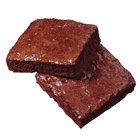
Can I Put Butter in Brownie Mix Instead ...
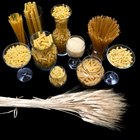
Calories in Cooked Wheat Pasta
References
Resources
Writer Bio
Robin Wasserman has been writing and prosecuting biochemical patents since 1998. She has served as a biochemical patent agent and a research scientist for a gene-therapy company. Wasserman earned her Doctor of Philosophy in biochemistry and molecular biology, graduating from Harvard University in 1995.
Photo Credits
Proxima13/iStock/Getty Images